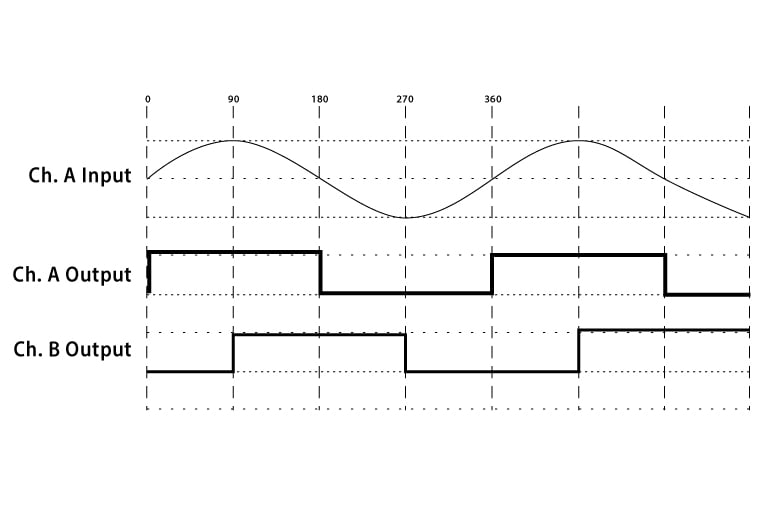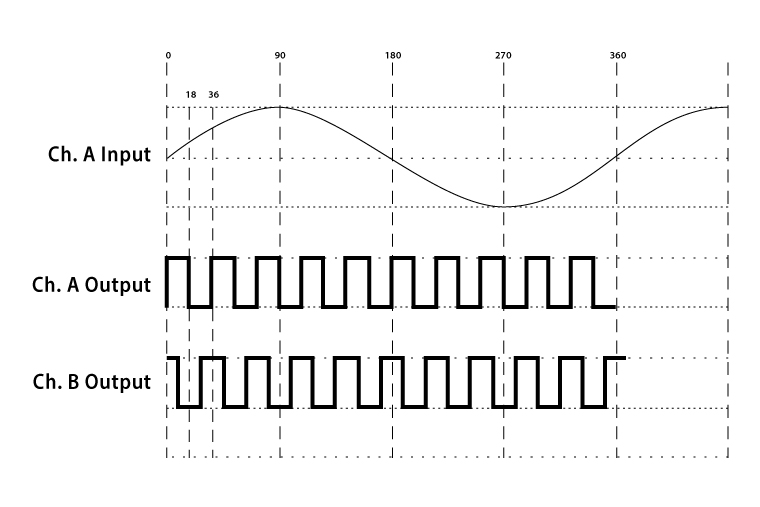Sine Waves
The key to the successful operation of an optical encoder is the optics system, which consists of a light source, a resolution disk, and a sensor. During the operation of the encoder, the resolution disk rotates between the light source and the sensor. Resolution lines on the disk break the beam of light between the light source and the sensor as each line passes by. The output from the sensor is an analog signal called a sine wave, a series of rising and falling voltages that varies with the amount of light reaching the sensor. Each sine wave period has a duration of 360 electrical degrees
These sine waves are input to a comparator that generates the series of on/off states, or square wave signals, commonly associated with an encoder. For a single output “Channel A” encoder, the square wave is in phase with the original sine wave. If a second “Channel B” signal is needed, it is generated from another sine wave 90° offset from the original sine wave. An on or off state is generated based on the angle of each sine wave period. See Figure 1.
Since a sine wave is an analog signal, each sine wave can theoretically be divided into an infinite number of components that represent the various positions of the encoder. To achieve an interpolated resolution, the comparator is replaced by an interpolation circuit, which performs the actual division of the sine wave generated by the optics system into the desired number of multiple interim positions. The interpolator uses the angle of the sine wave period to maintain position integrity, so a pure sine wave is a requirement for good interpolation. The interpolation circuit then generates a new square wave output at the increased resolution. See Figure 2.
One on and one off position is created for each level of interpolation. For example, to achieve an interpolation level of 10X, the interpolation circuit creates 10 on and 10 off positions in each sine wave period, for a total of 20 positions. This means that one position is created every 18 electrical degrees (360÷20). See Table 1.




